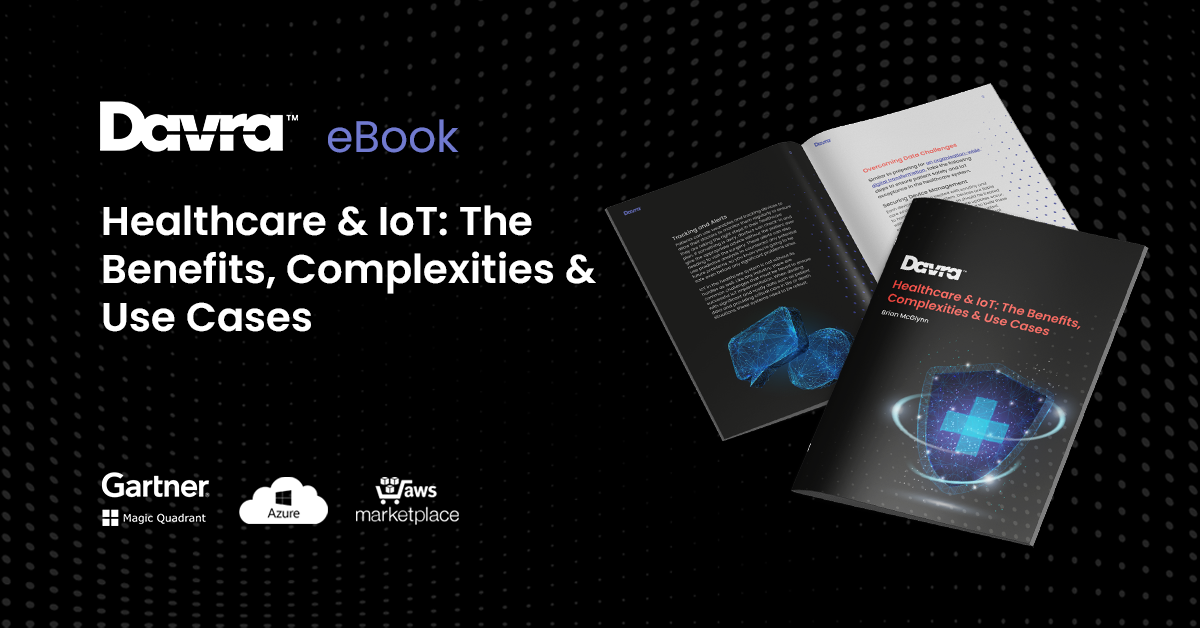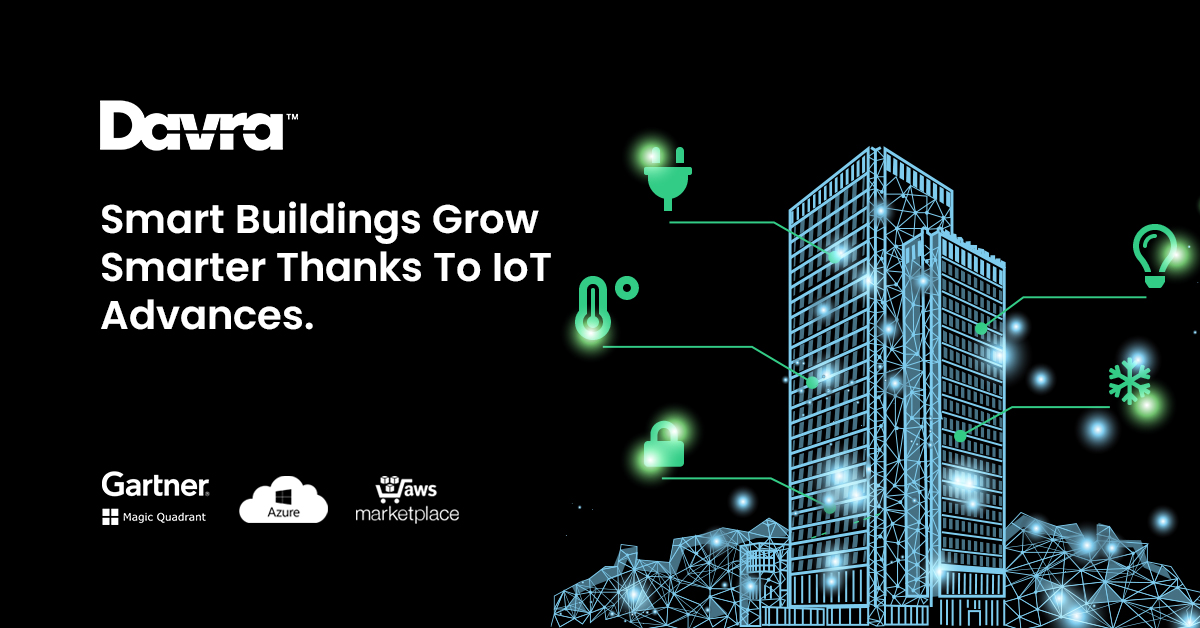IoT in Healthcare Use Cases eBook
Download Your Free IoT in Healthcare Use Cases eBook
Read More


Smart buildings use the Internet of Things technology to monitor various building parameters and make decisions based on real-time data without human assistance. Smart buildings are becoming more commonplace thanks to Internet of Things (IoT) platform providers like Davra and their ability to develop new solutions to old problems. Although new features will certainly be available in the future, here are some of the features that can be found in today’s smart buildings:
Smart parking is presently being used by commercial parking lots, sports arenas and smart cities with the primary goal to make parking easier and faster while increasing parking density. It is also designed to be more sustainable by minimizing fuel consumption and preserving other natural resources. Here’s how it works:
When you enter a smart parking facility, there is no need to drive around endlessly looking for an empty parking space. IoT sensors will notify you of open spaces, their location and the size of the available space. They will also let you know about nearby parking alternatives if your preferred lot is full. Smart parking can also help you find your car when you are ready to leave.
Smart parking will also save your company money because you and your employees will waste less time looking for a parking space. Additionally, you can remotely add money to your parking meter by using an app on your smartphone. This will keep you from having to leave an important meeting to feed your meter.
One way that smart buildings save energy is by precisely controlling the building’s HVAC system. IoT sensors located throughout the building provide data that is used to increase comfort levels while using less fuel. When compared to a building that uses energy inefficiently, smart buildings can provide energy savings of 30 to 50 percent.
Smart buildings also incorporate smart lighting to provide optimal light levels while guarding against over lighting. However, smart lighting is much more than simply using LEDs and other types of energy-efficient bulbs. It uses wireless IoT sensors and controls that are easy to integrate into your existing lighting system.
Another way that smart buildings save energy is by controlling electrical receptacles so that your small appliances are completely turned off when not in use. Additionally, your window shades can be automated to take advantage of the sun’s light and heat during the wintertime while reducing the impact of the sun’s heat during the summertime.
You can also use solar energy to provide a substantial portion of your building’s power requirements. The price of solar panels has fallen dramatically over the past few years, and new batteries have been developed that are suitable for storing solar energy. AI can save you money by switching your power to stored solar whenever time-of-use rates are at their highest.
If you are like many building owners, your maintenance program consists solely of fixing breakdowns when they occur. The problem with that approach is that you will never catch up or get ahead. You may not even know exactly how much machinery you have scattered throughout your building or when it is due for maintenance.
However, smart devices can provide the feedback you need to set up a predictive maintenance program. Such a system will give you a way to perform maintenance based on usage data rather than arbitrary time intervals. Predictive maintenance programs have been shown to reduce downtime by 70 percent and cut maintenance costs by as much as 25 percent.
Mechanical system breakdowns often have a rippling effect on production. By knowing when a mechanical system is likely to fail, though, alternate systems can be deployed so that production continues uninterrupted. As a result of this, your business will experience more uptime and an increase in productivity levels.
Smart buildings make it easy to control access. This is extremely important in apartment buildings where only tenants, guests and staff should be admitted. Controlled access is also important in industrial applications to protect intellectual property. Additionally, military bases and governmental entities use it to increase national security.
In addition to controlling access, smart buildings also provide protection against fire, theft and natural disasters. Smart buildings are also better able to avoid unnecessary disruptions due to false signals. For instance, fire alarms can be verified by monitoring IoT sensors that measure smoke and heat. In the case of an actual fire, smart buildings can also assist occupants in exiting.
Smart buildings also provide cybersecurity measures that protect against malware and ransomware. They typically do this by using secured virtual private networks (VPNs) to transmit encrypted data from point to point within the building. This ensures that even if a hacker is able to get into the system, they will not be able to access the data because it is encrypted.
Smart buildings continue to get smarter due to technological advances being made by IoT platform companies like Davra. Current features of smart buildings include smart parking lots, energy savings, improved maintenance and better security. They can also save water, reduce carbon emissions and expedite visitor check-in. The experts at Davra can help create an IoT platform that would fit your smart building needs. Get in touch with us today to speak to a member of the Davra team or to schedule a demo.
Brian McGlynn, Davra, COO
Download Your Free IoT in Healthcare Use Cases eBook

Davra IoT is the only Industrial IoT Platform Available on AWS Marketplace
Read MoreThe Collaboration of Humans & Robots Has Created The Cobot
Read More